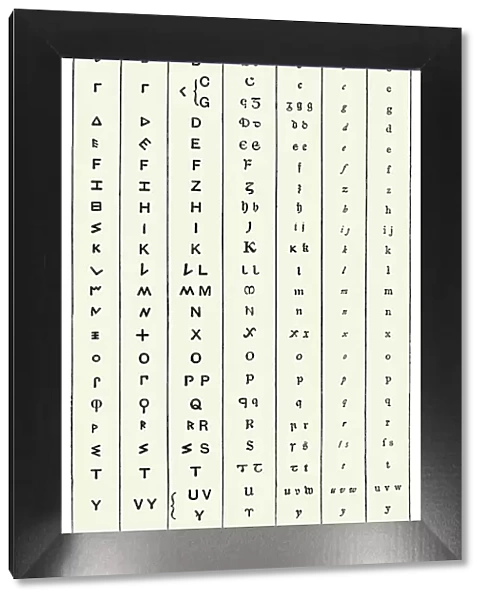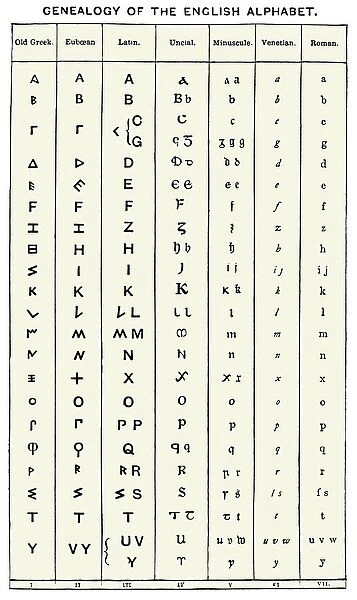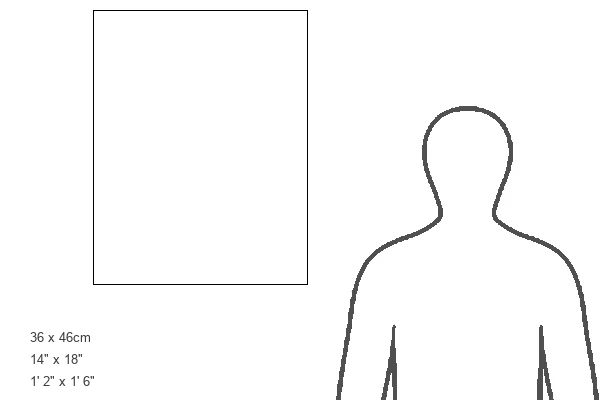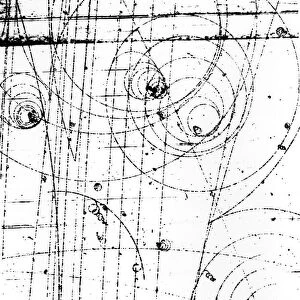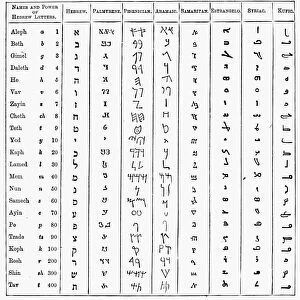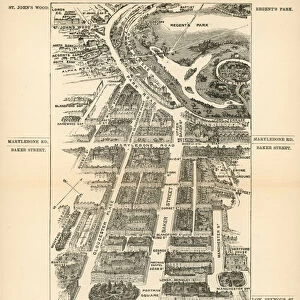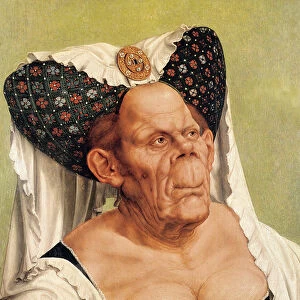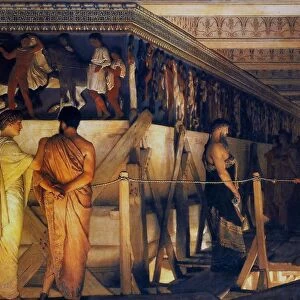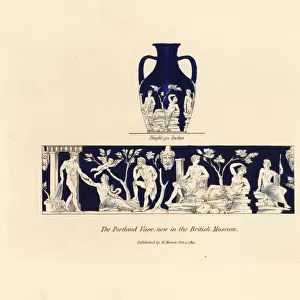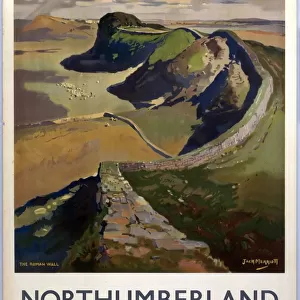Framed Print > Arts > Artists > E > Etruscan Etruscan
Framed Print : Development of the English alphabet
![]()

Framed Photos from Science Photo Library
Development of the English alphabet
Development of the English alphabet. The Old Greek alphabet derived from Phoenician and was in use by 900-800 BC. A western variant, known as the Euboean or Cumae alphabet, was used between the 8th to 5th centuries BC. The Etruscans adopted it and spread writing within the Italic peninsula, leading to the development of the Latin alphabet by the Romans. Uncial was used by Latin and Greek scribes (4th and 8th centuries AD) and was written in capitals, as other alphabets. Minuscule cursive (lower case) script developed from rapidly written versions of uncial, incorporating the linking of letters in the 4th century AD. Table from The Story of the Alphabet (Edward Clodd, 1900)
Science Photo Library features Science and Medical images including photos and illustrations
Media ID 6296323
© SHEILA TERRY/SCIENCE PHOTO LIBRARY
1900 Alphabet Antiquity Classical Diagram Edward Clodd Greek Language Latin Letter Linguistic Linguistics Roman Romans Script Symbol Table The Story Of The Alphabet Venetian Writing Writing System Etruscans Italics Latin Alphabet Miniscule
18"x14" Modern Frame
Introducing the Media Storehouse Framed Prints featuring the captivating image "Development of the English Alphabet" by Science Photo Library. This intriguing print showcases the fascinating journey of the English alphabet, tracing its roots back to the Old Greek alphabet, which derived from Phoenician and was in use by 900-800 BC. Witness the evolution of this essential communication tool with our beautifully framed print, adding a touch of history and intellectual charm to your space.
16x12 Print in an MDF Wooden Frame with 180 gsm Satin Finish Paper. Glazed using shatter proof thin plexiglass. Frame thickness is 1 inch and depth 0.75 inch. Fluted cardboard backing held with clips. Supplied ready to hang with sawtooth hanger and rubber bumpers. Spot clean with a damp cloth. Packaged foam wrapped in a card.
Contemporary Framed and Mounted Prints - Professionally Made and Ready to Hang
Estimated Image Size (if not cropped) is 35.6cm x 40.6cm (14" x 16")
Estimated Product Size is 35.6cm x 45.7cm (14" x 18")
These are individually made so all sizes are approximate
Artwork printed orientated as per the preview above, with portrait (vertical) orientation to match the source image.
FEATURES IN THESE COLLECTIONS
> Animals
> Mammals
> Muridae
> Western Mouse
> Arts
> Artists
> E
> Etruscan Etruscan
> Arts
> Artists
> R
> Roman Roman
> Europe
> Greece
> Related Images
> Historic
> Ancient civilizations
> Ancient Greece
> Greek history
EDITORS COMMENTS
This print showcases the fascinating journey of the English alphabet's development throughout history. Starting with its ancient roots, we see how the Old Greek alphabet emerged from Phoenician influences and became widely used by 900-800 BC. As time progressed, a western variant known as the Euboean or Cumae alphabet took center stage between the 8th and 5th centuries BC. The significance of this evolution becomes even more apparent as we delve into the impact it had on other civilizations. The Etruscans adopted this script, spreading writing across the Italic peninsula and ultimately paving the way for the Romans to develop their own Latin alphabet. This Roman alphabetic script would go on to shape not only their language but also influence many others in what is now known as Romance languages. As we explore further, we encounter different styles of writing that were prevalent during specific periods. Uncial script, utilized by both Latin and Greek scribes between the 4th and 8th centuries AD, was written in capitals like many other alphabets at that time. However, it was during this era that minuscule cursive script began to emerge rapidly from uncial versions, incorporating letter linking techniques. This thought-provoking table from "The Story of Alphabet" by Edward Clodd (1900) offers us a glimpse into an intricate web of linguistic history filled with symbolism and artistic expression. It serves as a reminder of how our modern-day communication systems have evolved over thousands of years through various cultures' contributions to shaping our beloved English alphabet.
MADE IN THE USA
Safe Shipping with 30 Day Money Back Guarantee
FREE PERSONALISATION*
We are proud to offer a range of customisation features including Personalised Captions, Color Filters and Picture Zoom Tools
SECURE PAYMENTS
We happily accept a wide range of payment options so you can pay for the things you need in the way that is most convenient for you
* Options may vary by product and licensing agreement. Zoomed Pictures can be adjusted in the Cart.

